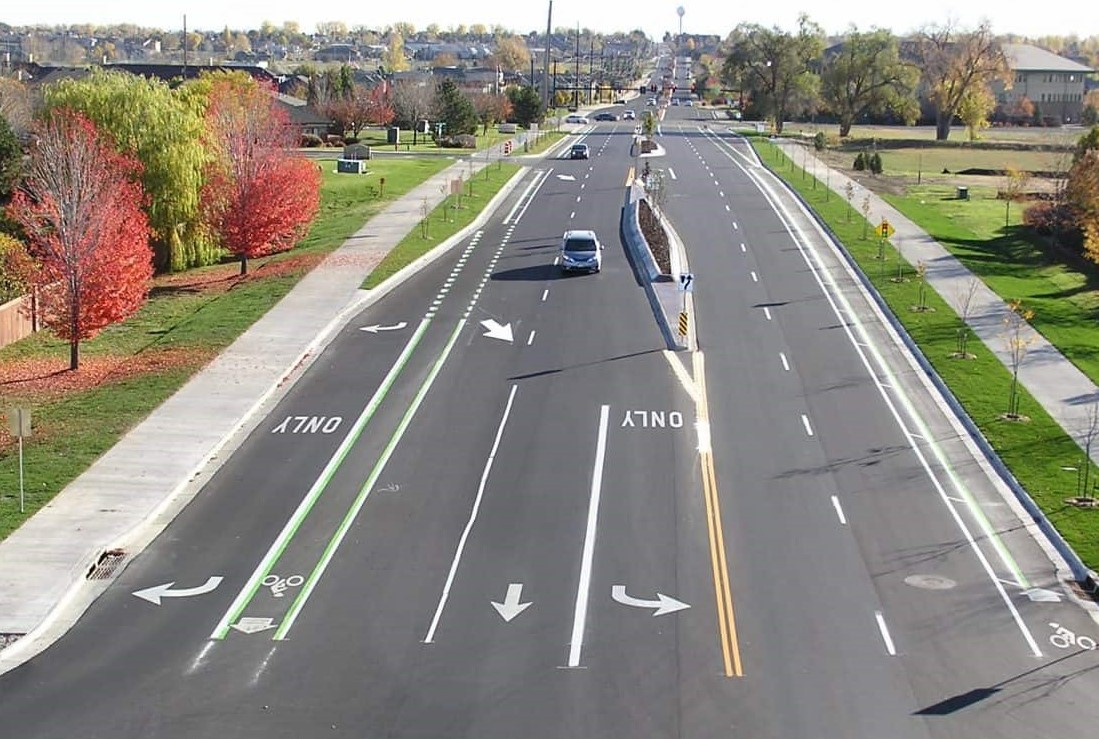 U.S. Department of Transportation
U.S. Department of Transportation
Federal Highway Administration
FHWA-SA-21-041
Auxiliary turn lanes—either for left turns or right turns—provide physical separation between turning traffic that is slowing or stopped and adjacent through traffic at approaches to intersections. Turn lanes can be designed to provide for deceleration prior to a turn, as well as for storage of vehicles that are stopped and waiting for the opportunity to complete a turn.
While turn lanes provide measurable safety and operational benefits at many types of intersections, they are particularly helpful at two-way stop-controlled intersections. Crashes occurring at these intersections are often related to turning maneuvers. Since the major route traffic is free flowing and typically travels at higher speeds, crashes that do occur are often severe. The main crash types include collisions of vehicles turning left across opposing through traffic and rear-end collisions of vehicles turning left or right with other vehicles following closely behind. Turn lanes reduce the potential for these types of crashes.
Installing left-turn lanes and/or right-turn lanes should be considered for the major road approaches for improving safety at both three- and four-leg intersections with stop control on the minor road, where significant turning volumes exist, or where there is a history of turn-related crashes. Pedestrian and bicyclist safety and convenience should also be considered when adding turn lanes at an intersection. Specifically, offset left- and right-turn lanes will lengthen crossing distances for pedestrians.
Offset Turn Lanes
Providing offset of left- and right-turn lanes to increase visibility can provide added safety benefits, and is preferable in many situations, particularly at locations with higher speeds, or where free-flow or permissive movements are possible.
At turn lanes with zero or negative offset, turning vehicles can block sightlines. For left-turn lanes, this usually involves opposing left-turning vehicles occupying the turn lanes at the same time. For right-turn lanes, this typically involves right-turning vehicles from the major road and vehicles entering the intersection from the minor road. In both scenarios, adding positive offset to turn lanes enhances the sight distance to approaching vehicles that conflict with the turning movement. Offset turn lanes should be considered when there is a high frequency of these types of conflicts in order to reduce the likelihood of a severe crash.

Illustration comparing zero offset to positive offset of left- and right-turn lanes. Source: FHWA
Sources
1. (CMF ID: 260, 268, 285, 289) Harwood et al. Safety Effectiveness of Intersection Left- and Right-Turn Lanes. FHWA-HRD-02-089, (2002).
2. (CMF ID: 6096) Persaud et al. Safety Evaluation of Offset Improvements for Left-Turn Lanes. FHWA-HRT-09-035, (2009).

